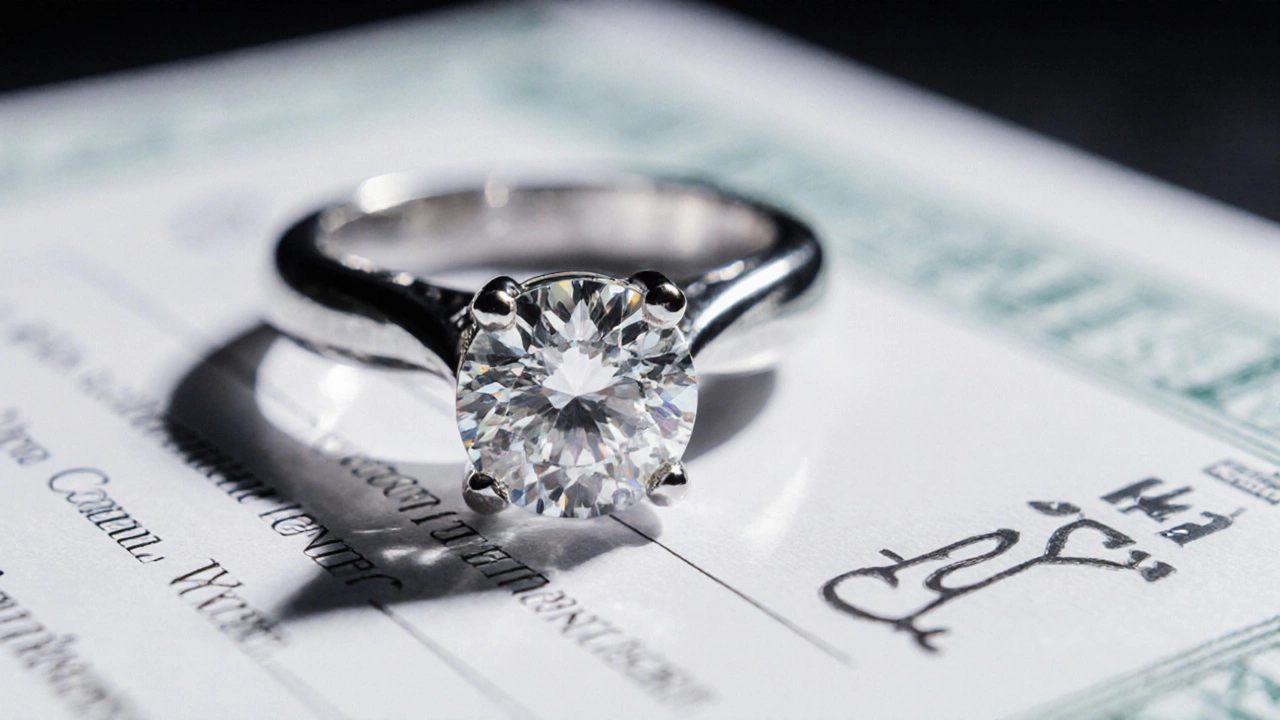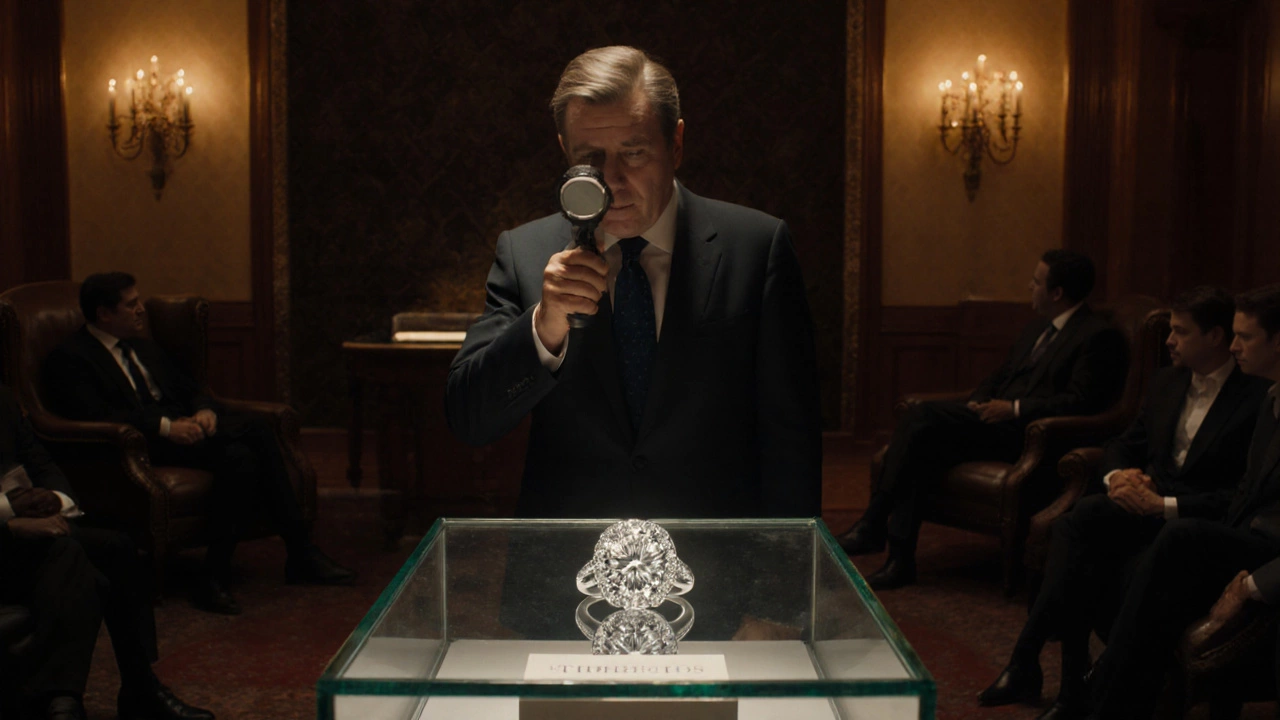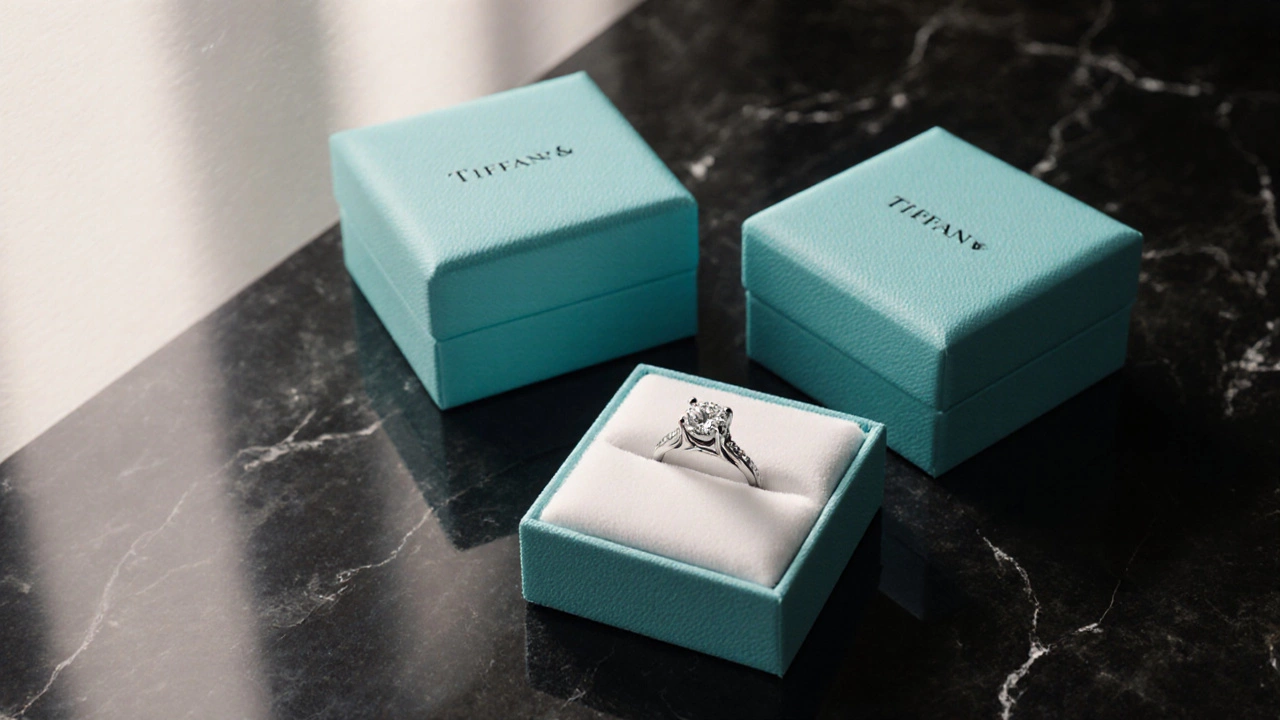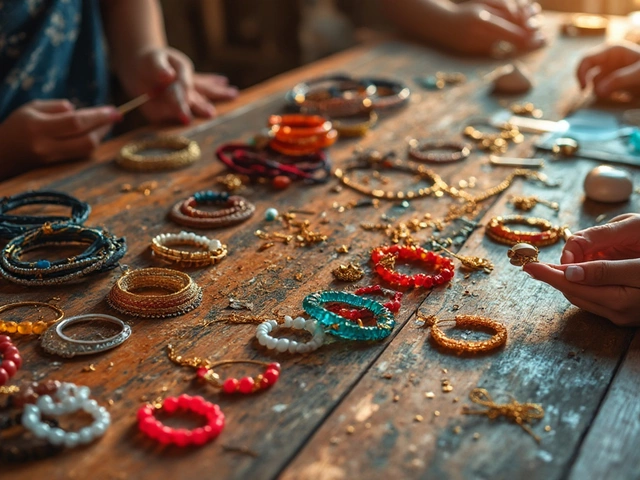Tiffany Ring Resale Value Estimator
Estimate Your Tiffany Ring's Resale Value
Enter details about your Tiffany ring to get an estimated resale value range.
Estimated Resale Value Range
Based on your inputs, your Tiffany ring could retain approximately of its original value.
Key Takeaways
- Overall, Tiffany rings tend to retain value better than many non‑luxury brands, but the exact percentage depends on metal, design, and condition.
- Iconic collections like the TiffanySetting, platinum pieces, and limited‑edition releases command the strongest resale premiums.
- Authentication (original paperwork, GIA certificates, and hallmarks) is essential for preserving value on the secondary market.
- Resale channels matter - auction houses and reputable jewelers usually fetch higher prices than casual online marketplaces.
- Comparing Tiffany to Cartier, HarryWinston, and other luxury houses helps set realistic expectations for future appreciation.
When you hear the name Tiffany & Co. ring is a luxury jewelry piece known for its signature blue box, meticulous craftsmanship, and iconic designs such as the Tiffany Setting, the first question often is: will it hold its value?
What Drives the Resale Value of a Tiffany Ring?
Three core factors govern whether a Tiffany ring keeps its price over time:
- Brand equity - Tiffany has cultivated a premium reputation for over a century, and that brand cachet translates into secondary‑market demand.
- Material and design - Rings made of platinum, 18k gold, or featuring the classic Tiffany Setting tend to outperform simple gold bands.
- Condition and provenance - Original box, receipts, and a reputable gem‑grading certificate (usually from the Gemological Institute of America) act as proof that the piece is genuine and well‑maintained.
Understanding these levers helps you predict how much you might get back if you ever decide to sell.
Historical Performance: How Have Tiffany Rings Fared?
Data from major auction houses such as Sotheby’s and Christie’s show that:
- Platinum Tiffany Settings from the 1990s have appreciated 12‑18% above inflation over the past 20years.
- 14k gold solitaire rings typically lose 5‑10% of their original retail price after five years, mirroring broader market trends for gold jewelry.
- Limited‑edition pieces (e.g., the “Tiffany T” collection) can command a 20‑30% premium when sold by reputable dealers.
These figures demonstrate that while not every Tiffany ring is a guaranteed investment, the brand’s top‑tier pieces tend to preserve or even grow their value.

Why the Tiffany Setting Remains a Resale Star
The Tiffany Setting - a six‑prong solitaire setting introduced in 1886 - is the poster child for value retention. Its design maximizes light exposure, and because it was patented, counterfeit versions are rare. When paired with a certified diamond, resale values often stay within 85‑90% of the original purchase price after a decade.
Materials Matter: Platinum vs. Gold vs. Silver
Below is a quick look at how the primary metals affect resale:
| Metal | Typical Retention | Key Reason |
|---|---|---|
| Platinum | 85‑90% | Durable, perceived rarity, low alloy content |
| 18k Gold | 78‑84% | High gold content but market price fluctuates |
| 14k Gold | 70‑78% | More alloy, lower intrinsic value |
| Silver | 55‑65% | Oxidation, less demand in luxury segment |
Authentication: The Backbone of Value Preservation
Buyers and sellers alike rely on three pieces of proof:
- Original Tiffany box and paperwork - The iconic blue box and a receipt with serial numbers confirm origin.
- Hallmarks - Stamped directly on the metal (e.g., “925” for sterling silver, “PT” for platinum) are legal markers of purity.
- Gem certificates - A GIA or IGI report detailing carat, cut, clarity, and color removes doubt about the diamond’s quality.
Skipping any of these steps can slash resale offers by up to 25%, as many secondary‑market buyers will discount unverified pieces.
Where to Sell: Choosing the Right Channel
Not all resale avenues are created equal. Here’s how they rank for getting the best price:
- Reputable luxury jewelers - Stores that specialize in pre‑owned fine jewelry often pay 80‑90% of retail for high‑grade Tiffany pieces.
- Auction houses - Sotheby’s, Christie’s, and Bonhams can fetch top dollar for rare or limited‑edition rings, though commissions can eat 10‑15% of the final price.
- Online marketplaces - Platforms like eBay or Poshmark provide exposure but require you to vet buyers; expect offers around 60‑70% of retail.
- Pawnshops - Quick cash but typically only 30‑45% of retail, reflecting high risk for the buyer.
When you’re aiming for a strong return, start with a trusted jeweler or auction house and keep detailed documentation ready.

Comparison: Tiffany vs. Other Luxury Brands
| Brand | Typical Retention | Best‑selling Category |
|---|---|---|
| Tiffany & Co. | 78‑88% | Tiffany Setting, Platinum Solitaires |
| Cartier | 72‑82% | Love, Trinity Rings |
| Harry Winston | 80‑90% | Cluster‑cut, Platinum Settings |
Notice how Tiffany’s retention sits comfortably between Cartier and HarryWinston. The key takeaway? If you pick a classic design in a durable metal, you’re likely to see a healthy resale percentage.
Tips for Buying a Tiffany Ring with Future Value in Mind
- Choose a timeless design - the Tiffany Setting or a simple solitaire never goes out of style.
- Prefer platinum or 18k gold - these metals hold intrinsic value better than lower‑karat gold.
- Insist on a GIA‑certified diamond - certification adds credibility and pricing power.
- Keep all original packaging - the blue box and receipts are bargaining chips.
- Stay informed about limited releases - special editions often become collector’s items.
Following these steps maximizes the odds that your purchase will act as both a cherished adornment and a solid store of wealth.
Common Pitfalls that Erode Value
- Ignoring wear and tear - scratches or missing hallmarks drastically lower offers.
- Buying from unauthorized sellers - counterfeit or gray‑market pieces lack the brand premium.
- Neglecting insurance - uninsured loss means no chance of recouping value.
- Reselling too quickly - market appetite often peaks after 3‑5years of ownership.
Frequently Asked Questions
Do all Tiffany rings appreciate in value?
No. While iconic designs and precious metals tend to hold or grow in price, simple gold bands or heavily worn pieces often depreciate, similar to other jewelry brands.
How much can I expect to get back for a used Tiffany platinum solitaire?
Typically 80‑90% of the original retail price, provided you have the original box, receipt, and a GIA certificate.
Is it safe to sell a Tiffany ring on an online marketplace?
You can, but be prepared for lower offers (60‑70% of retail) and verify the buyer’s credibility. Using a trusted jeweler or auction house usually yields better returns.
What role does the brand’s blue box play in resale value?
The iconic blue box serves as a visual cue of authenticity. Rings kept in their original packaging often command higher prices because buyers see proof of provenance.
Should I get my Tiffany ring insured?
Absolutely. Insuring adds a layer of protection and preserves the financial value in case of loss, theft, or damage.
In short, Tiffany rings can be a smart purchase if you pick the right design, keep documentation, and sell through reputable channels. Their blend of brand prestige, timeless style, and high‑grade materials means they often hold their value better than average fine jewelry, but they’re not a guaranteed investment. Treat them as a piece of personal luxury that also offers solid resale potential when you play it wisely.



